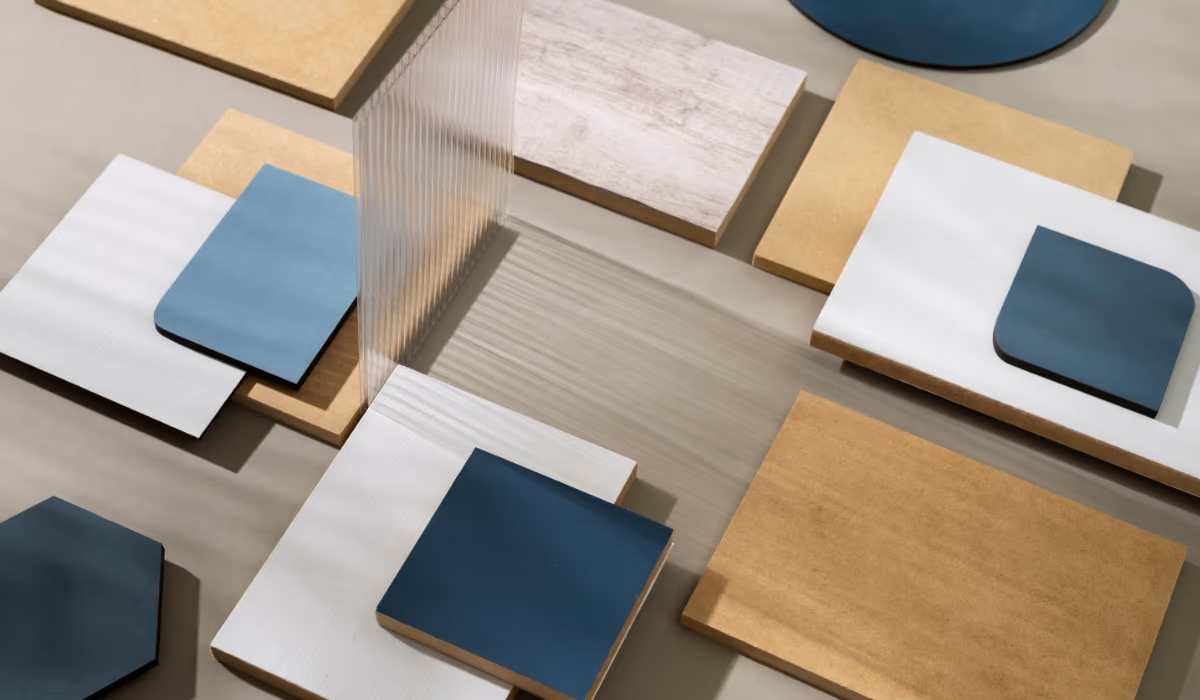Flooring is one of the most visible and foundational design choices in a home. The type of flooring you select affects comfort, durability, maintenance, and appearance. Because homes have varied needs—like moisture levels, foot traffic, climate, budget—different flooring materials make sense in different places. Knowing the strengths and trade-offs of each type helps you pick wisely.
Hardwood Flooring
Hardwood is a classic and elegant choice made from solid timber planks like oak, maple, walnut, or cherry. It feels warm underfoot, lasts for decades with proper care, and can often be refinished multiple times. However, it is sensitive to moisture (can warp or swell in humid areas) and tends to be more expensive both in material and installation. In dry climates or well-protected indoor spaces, hardwood remains a premium option.
Engineered Wood & Laminate
Engineered wood consists of a thin veneer of real wood bonded over multiple layers of plywood or composite substrate. It gives a wood appearance but is more stable in humidity and less likely to warp. Laminate mimics wood or tile using a photographic layer over high-density fiberboard. Laminate is often more affordable and scratch resistant, though it cannot be refinished like real wood. Both are good in settings where solid wood is too vulnerable.
Tile
Ceramic and porcelain tiles are extremely durable, water-resistant, and ideal for bathrooms, kitchens, and areas exposed to moisture. Porcelain is denser and less porous than standard ceramic, making it more suitable for heavy traffic or outdoor use. Tile offers endless design flexibility in colors, sizes, and patterns, but tile installation and grout maintenance require more effort, and tile can feel colder and harder underfoot compared to wood.
Vinyl & Luxury Vinyl Plank
Vinyl flooring has come a long way and offers water resistance, durability, and easy maintenance. Luxury vinyl plank (LVP) or tile (LVT) versions mimic wood or stone textures closely. They are ideal for basements, bathrooms, kitchens, or spaces where moisture or spills occur. Lower cost, straightforward installation (some are click systems), and resilience make vinyl a practical choice for many homes.
Natural Stone & Slate
Stone flooring, like marble, granite, travertine, or slate, brings timeless elegance and durability. Its natural variation in pattern and color makes each installation unique. However, stone is heavy (requires a strong subfloor), cold underfoot, and often needs sealing to protect against stains. In high-end homes or spaces with plenty of support and controlled environment, stone flooring makes a dramatic statement.
Carpet & Carpet Tiles
Carpet provides softness, warmth, and sound absorption. It works well in bedrooms, living rooms, or quieter zones. Carpet tiles are modular and easier to replace if damaged. The downside is that carpet stains more easily, may host allergens, and tends to wear faster in high traffic or moisture-prone zones. Quality, pile height, and maintenance method heavily influence how long carpet stays good.
Bamboo, Cork & Specialty Materials
Bamboo is technically a grass but functions like hardwood—sustainable, strong, and stylish. Cork provides a cushioned feel and good insulation. There are also specialty floors like rubber, reclaimed wood, or recycled materials. These options are often niche but may be ideal for green or custom homes, or rooms where comfort and eco-friendliness are priorities. Each has specific installation and care needs to ensure longevity.
Concrete & Polished Floors
Exposed concrete or polished concrete floors are becoming popular in modern and industrial design styles. They’re extremely durable, low maintenance, and can be stained or stamped for decorative effects. However, they are hard and cold underfoot, and cracking or settling in the slab can become visible. In climates with mild temperature swings and proper subslab preparation, concrete floors are stylish and practical.
Conclusion
There is no single “best” flooring—each type has its ideal use, advantages, and drawbacks. Hardwood, engineered wood, vinyl, tile, carpet, stone, bamboo, and even concrete each shine under different conditions (moisture, traffic, room type). Match the flooring to the space, maintenance level you’re comfortable with, and long-term needs. When you balance style with practicality, your chosen flooring can last and look great for years to come.
FAQs
Which type of flooring is best for wet areas like bathrooms and kitchens?
Porcelain tile, vinyl (especially waterproof or plank types), and sealed stone are top choices for moisture-prone rooms. Avoid solid hardwood or carpets in those zones.
Can laminate stand up to water spills?
Some laminate is water-resistant, but generally it’s less tolerant than vinyl or tile. Prompt cleaning of spills helps, but constant exposure can damage the core.
Is hardwood better than engineered wood?
Hardwood offers the real wood feel and can be refinished multiple times, but it’s more sensitive to moisture. Engineered wood gives more stability in varying humidity and is often more versatile in installations.
How often does carpet need replacement?
Depending on quality and use, typical carpet in a busy area might last 8–12 years. In low-traffic rooms, quality carpet can last longer. Regular cleaning and maintenance help extend life.
Can I mix flooring types in my home?
Yes—transitions between rooms often use thresholds or transition strips. Just maintain consistent levels (height) so it’s not a tripping hazard, and choose complementary patterns or tones for visual flow.







